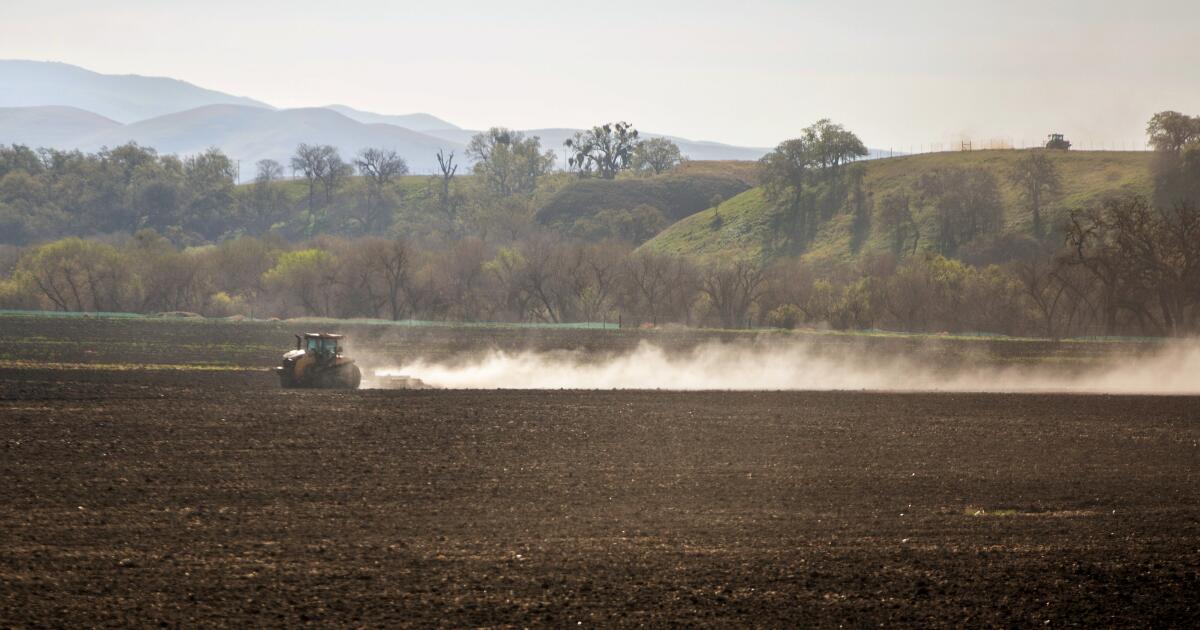The latest California numbers suggest 2025 will be another record-smashing year for valley fever, the illness linked to drought and precipitation and spread by fungal spores.
There were 6,761 cases reported through the end of July, according to state health officials — a significant increase over the 10-year average of 3,833 for that same time period and a slight jump from last year’s total of 6,364. The 10-year low was in 2016, when there was less than a quarter of what there is now.
Last year’s total of nearly 12,500 cases is the most on record for California and far more than the 7,000 to 9,000 cases per year the state averaged between 2016 and 2024.
“California had a record year for Valley fever in 2024 and, so far, case counts are high in 2025. Valley fever is a serious illness that’s here to stay in California,” said Erica Pan, director of the state public health department.
Officials say the current count is likely to be revised upward as there are often delays in reporting.
Valley fever is most prevalent in the San Joaquin Valley and southern part of the state where the fungus, Coccidioides, thrives in dry, arid soil. Case numbers are also climbing in the northern Central Valley, though, and along the state’s Central Coast.
Researchers speculate the rise is tied to patterns of drought and precipitation. Periods of severe drought followed by wet winter and dry summer seem to coincide with more people getting sick.
They also suspect climate change has expanded the fungi’s range into areas where it was previously rare. For instance, since 2023, Monterey County’s case numbers have exploded. There were 47 cases in 2023 and 348 this year as of July 31.
Cases also doubled since 2023 in Contra Costa, Fresno, San Luis Obispo and Merced counties.
People contract Valley fever by inhaling the Coccidioides spores, released when wind, wildfire, tractors, bulldozers, digging or even dancing disturbs the soil.
Last year, at least 19 people who attended Lightning in a Bottle, a five-day music and art festival held at Buena Vista lake in Kern County, got sick — including several with pneumonia-like symptoms, rashes, headaches and exhaustion.
But most people infected won’t get symptoms and will fight off the infection naturally. Those who do feel sick may be hard-pressed to know what they have, since the symptoms are similar to COVID or the flu, further complicating efforts to address the disease.
“We want to remind Californians, travelers to California and their healthcare providers to watch for signs and symptoms of Valley fever to help detect it early,” Pan said.
In rare cases, the fungus can spread to other parts of the body and cause severe disease or death.
Valley fever is not contagious.
Pan urged people to seek help from a medical provider if they’ve had a cough, fever, trouble breathing and tiredness for more than 7 to 10 days — especially if they’ve been outdoors in dusty air in the Central Valley or Central Coast regions.
Pets are also susceptible.
Health officials said people can reduce their risk while traveling in the San Joaquin Valley and much of the southwestern United States by staying indoors and keeping doors and windows closed when it’s windy; keeping car windows closed and using recirculated air instead of fresh; wetting soil before digging or disrupting; and wearing a properly fitted N95 mask if the outdoors can’t be avoided.
